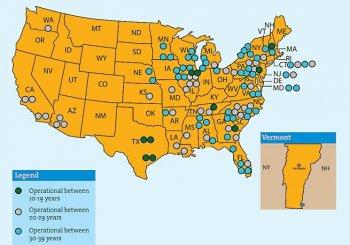A $3.3 billion project to place a dam in California’s Temperance Flat of the San Joaquin River has been the subject of much controversy in the region. While agribusiness in California is in support of the implementation of the large dam in Temperance Flat, others stand in staunch opposition to it.
A recent report called The Upper San Jaoquin River Basin Storage Investigation (USJRBI) , released by the Bureau of Reclamation, investigates the repercussions of the dam’s placement. It finds that the dam will result in a large array of benefits, such as “agricultural and urban water reliability, emergency water supply, ecosystem enhancement, urban water quality, hydropower, recreation opportunities, and flood damage reduction.”
The report calculates that the dam will result in 1,260 acre-feet of additional storage capacity and up to $180 million per year of total potential annual monetary benefits. These benefits, the report suggests, overrule the estimated costs.
But according to internationally renowned water expert Peter Gleick, these results cannot be trusted. Gleick was recognized by Wired magazine as one of the fifteen people that the president should listen to. In an article published on the Circle of Blue Waternews, Gleick wrote that the cost-benefit analysis performed in the investigative study is not adequate.
Gleick stated that there are significant costs which the study overlooks. Among the overlooked costs, he noted that the dam would result in the flooding of major Native American villages, and their sacred and gathering sites. He said, “Local Native American community representatives have strongly objected to the reservoir on these grounds.”
Furthermore, Gleick believes that there are other, more cost-effective methods for meeting the needs of farmers whose farms are suffering from water deficiency. These methods are not only more financially sound but they are also more environmentally friendly and less harmful to the surrounding settlements. In a report titled “California Farms Water Success Stories,” he and others from the Pacific Institute, document farmers who have been able to reduce their costs and water wastes and increase their profits by refining water usage techniques.
The methods outlined in the report include accurately measuring and monitoring water use, capturing the untapped potential of existing technologies such as drip-irrigation, and setting targets and providing economic incentives to accelerate water management improvement.
With the addition of these considerations, Gleick suspects that the cost benefit analysis performed in the USJRBI report would yield results unfavorable to the dam’s construction.
A recent report called The Upper San Jaoquin River Basin Storage Investigation (USJRBI) , released by the Bureau of Reclamation, investigates the repercussions of the dam’s placement. It finds that the dam will result in a large array of benefits, such as “agricultural and urban water reliability, emergency water supply, ecosystem enhancement, urban water quality, hydropower, recreation opportunities, and flood damage reduction.”
The report calculates that the dam will result in 1,260 acre-feet of additional storage capacity and up to $180 million per year of total potential annual monetary benefits. These benefits, the report suggests, overrule the estimated costs.
But according to internationally renowned water expert Peter Gleick, these results cannot be trusted. Gleick was recognized by Wired magazine as one of the fifteen people that the president should listen to. In an article published on the Circle of Blue Waternews, Gleick wrote that the cost-benefit analysis performed in the investigative study is not adequate.
Gleick stated that there are significant costs which the study overlooks. Among the overlooked costs, he noted that the dam would result in the flooding of major Native American villages, and their sacred and gathering sites. He said, “Local Native American community representatives have strongly objected to the reservoir on these grounds.”
Furthermore, Gleick believes that there are other, more cost-effective methods for meeting the needs of farmers whose farms are suffering from water deficiency. These methods are not only more financially sound but they are also more environmentally friendly and less harmful to the surrounding settlements. In a report titled “California Farms Water Success Stories,” he and others from the Pacific Institute, document farmers who have been able to reduce their costs and water wastes and increase their profits by refining water usage techniques.
The methods outlined in the report include accurately measuring and monitoring water use, capturing the untapped potential of existing technologies such as drip-irrigation, and setting targets and providing economic incentives to accelerate water management improvement.
With the addition of these considerations, Gleick suspects that the cost benefit analysis performed in the USJRBI report would yield results unfavorable to the dam’s construction.

